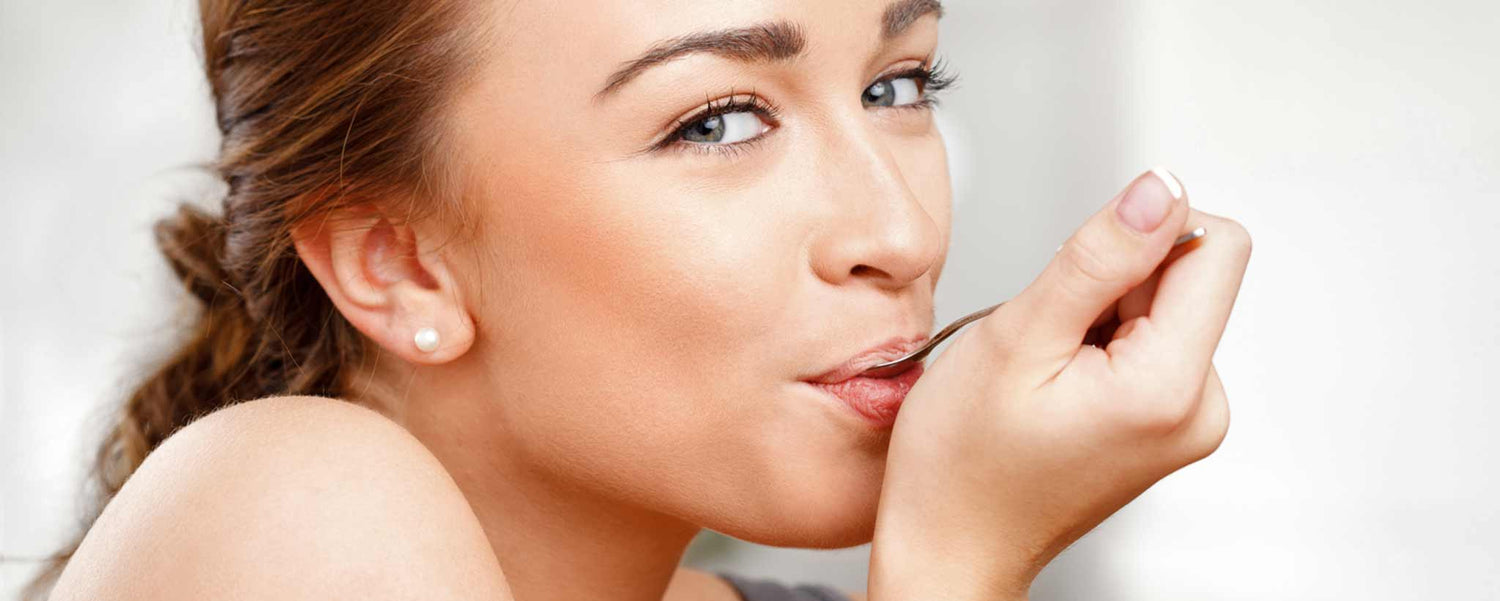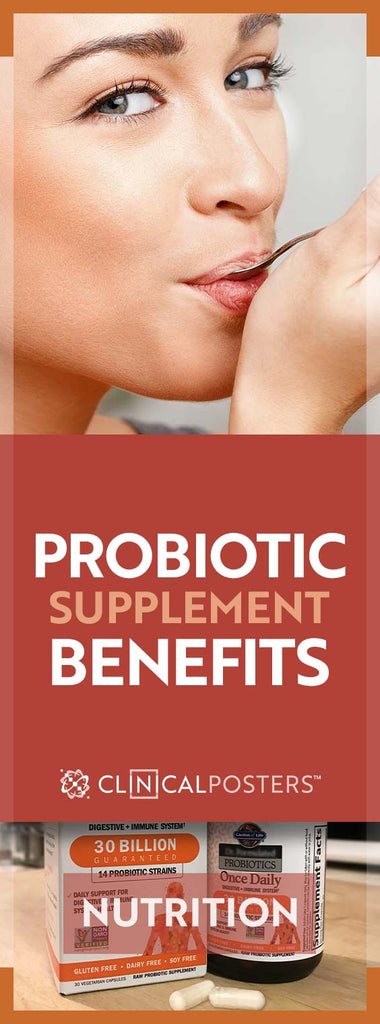Many doctors fail to address the collateral damage of broad-spectrum antibiotics.
The Good, Bad, and Ugly
We are frequently confused about when to consume probiotics. Some people mistakenly believe probiotics are replacements for antibiotics. Others think all you need is yogurt for good probiotic nutrition. Most people do not even think about probiotic supplements.
Our digestive system contains wastes that produce gas and harmful bacteria. Our gut also contains trillions of health-promoting bacteria to counteract damaging microbes. Once food enters our digestive system, all the good and the harmful bacteria do some “battle.” When they outnumber the bad, the good prevails.
When bad bacteria outnumber the good, you will feel uncomfortable, sometimes with intestinal pain, sluggishness, and maybe more frequent defecation. These are ways the digestive system tries to eliminate the malicious invaders.
People who eat fermented foods (kimchi, kombucha, sauerkraut, yogurt, kefir, tempeh, or small doses of organic apple cider vinegar) grow normal healthy flora in the gut. These foods mostly contain lactobacillus acidophilus bacteria, which is one of the probiotic strains. [1,2]
Nearly 70% of the immune system involves the intestinal tract, where 500 species of flora reside in a population of about 100 trillion microorganisms. To achieve a beneficial symbiotic relationship, the “bad” bacteria must not multiply to a point where they significantly outnumber the “good” bacteria. That’s right. The “good” requires “bad” bacteria to stay alive. [3]
Sometimes you need antibiotics to kill off excessive bad bacteria that make you sick. Few patients understand that some beneficial bacteria are being sacrificed in that process. When was the last time a physician mentioned probiotic supplements to you after prescribing antibiotics?
How “Bad Bacteria” is Formed
Healthy gastrointestinal flora help fight off infection during the putrefaction of wastes. These wastes are called “bad” bacteria or dysbiosis. Bad bacteria in the gut flora has been linked with the development of cirrhosis and non-alcoholic fatty liver disease.
A diet that is high in fat, sodium chloride, and low in insoluble fiber will elevate the concentration of “bad” bacteria called Bacteroides sp. and decrease the concentration of “good” bacteria Bifidobacteria sp. in the stool. [4,5]
Excessive sugar, processed foods and even alcohol can disturb healthy flora. “Good” bacteria have a significant role in metabolizing dietary carcinogens. So the use of antibiotics or a diet that lacks variety of fruits, vegetables and fibers can contribute to the disproportionate growth of “bad” bacteria.
We must change our diet to eat more plant-based or raw foods, especially those containing high fiber because they feed the “good” bacteria in our gut. Excessive meat consumption has a by-product called Bacteroides sp. that produces the urease enzyme, which hydrolyses urea to ammonia, raising stool pH. This correlates with the risk of colon cancer when stool pH is relatively high.
Bifidobacteria sp. is the “good” bacteria that decreases during putrefaction dysbiosis. It ferments soluble fiber, thereby making short-chain fatty acids like butyrate. Butyrate neutralizes the adverse effects of harmful bacteria like Bacteroides sp. (which can lower the stool pH and cause neoplastic cells to differentiate, decrease inflammation in ulcerative colitis, and decrease absorption of ammonia from the intestine). There is a reduction of “good” bacteria while fighting the “bad” bacteria. Probiotic supplements restore a proper balance.
Effects Bacteria Imbalance
Women sometimes develop yeast infections following prolonged ingestion of antibiotics. Symptoms include itching and irritation in the vagina and vulva along with thick, white, odorless discharge. During the yeast proliferation, Candida albicans can also affect epithelial cells and lead to fungal infections. [6,7]
⚠️ Warning: Probiotics are not recommended for people with pancreatitis. Do you have gastrointestinal disturbance? It is important to obtain a medical evaluation to rule out inflammation of the pancreas before taking probiotic supplements. —NutritionFacts.org
A male’s yeast infection signs and symptoms include a reddish rash, along with itching or burning at the tip of the penis. The other common symptoms of yeast infection are yeasty coating on the tongue, malodorous breath, bloating, indigestion, constipation, frequent intestinal gas, diarrhea, watery stools, sexual dysfunction, irritability, mood swings, fatigue or lack of energy, memory loss, prostate problems, athletes foot, dry, itchy and flaky skin. [8]
Non-Yeasty Foods To Eat or Drink [9,10]
- Beans
- Butter and ghee
- Fruit smoothies
- Grains (brown rice, corn, barley, rye)
- Gluten-free grains (quinoa, buckwheat)
- Green vegetables
- Kefir and yogurt
- Low-mold nuts/seeds (almonds, coconut, flaxseed, sunflower seeds)
- Oats (oat bran)
- Probiotics
- Potatoes
- Protein (unprocessed meat and fish)
- Skim milk
- Soda breads (typically yeast-free)
- Squash
Men or women develop cravings for sweets or food containing carbohydrates like pasta, bread, chips to feed the parasite. Fortunately, most yeast infections are easily treated with an over-the-counter antifungal treatment, such as Monistat® or Fluconazole (Rx Diflucan pill). However, yeast infection from a sexual partner can travel through the urethra into the prostate or become systemic. [10]
Broad-spectrum antibiotics affect your health (the host), and they can digest food, ferment carbohydrates, and metabolize bile acids. Antibiotics, particularly in children, can predispose ones to Inflammatory Bowel Disease (IBD). Studies of animals have shown that certain probiotic bacteria can prevent or minimize intestinal inflammation. Clinical evidence also adds support for the use of probiotics in IBD. [5]
Internal bad bacteria proliferation can be manifest on the outside through your skin. Recent studies report beneficial results of probiotics on atopic dermatitis or eczema. [11] Species of probiotic bacteria used in atopic dermatitis:
| Lactobacillus | Bifidobacterium | Saccharomyces |
|---|---|---|
| L. rhamnosus GG | B. longum reuter | S. boulardii |
| L. rhamnosus LC705 | B. longum infantis | |
| L. fermentum VRI-033 | B. breve | |
| L. paracasei | B. lactis UABLA-12 | |
| L. plantarum | ||
| L. salivarius | ||
| L. acidophilus |

Gluten-free, dairy-free, soy-free probiotic supplements are available.
Probiotic and Prebiotic Sources
“Probiotics” were defined by a group of scientists convened by the Food and Agriculture Organization of the United Nations (New York) as “live microbes which when administered in adequate amounts confer a health benefit on the host.” Generally formed from refrigerated dairy products, but also available in non-dairy vegan formulations, they make certain B-group vitamins (B2, B12, folic acid and biotin) and vitamin K in the gut. Probiotics also regulate the immune system. [12]
Most beers do not contain live active cultures of probiotics. Traditional Belgian beers like Hoegaarden, Westmalle Tripel, and Echt Kriekenbier contain active cultures. This is because live probiotic yeast brews go through a second fermentation within the bottles, allowing you to reap the probiotic benefits. [13,14]
“Prebiotics,” are non-digestible substances that, when consumed, provide a beneficial physiological effect on the host by selectively stimulating the favorable growth or activity of a limited number of “good bacteria.” Familiar sources of prebiotics include: asparagus, garlic, leeks, onions, Jerusalem artichokes, berries, bananas, tomatoes, chicory, spinach, kale, chard, mustard greens, lentils, navy beans, garbanzo beans, black beans, whole grains, oats, barley, and wheat. [15,16]
Help “Good Bacteria” Flourish
To maintain or restore the proper level of good bacteria, people often consume yogurt labeled with live active cultures and prebiotics or probiotic supplements. It is essential to recognize that the acid pH level varies throughout the intestinal tract. Similarly, “good bacteria” present in the stomach differs from that in the small intestine. Plant-based yogurt can include almond milk and citric acid to simulate real yogurt taste but it lacks probiotic benefits.
Yogurts that carry the Live Active Culture seal deliver an adequate quantity of yogurt starter bacteria, but the level of any additional bacteria cannot be presumed. One exception is DanActive®, a fermented milk product by Dannon (The Groupe Danone, Tarrytown, N.Y.) that discloses it contains 10 billion CFUs of its own branded Lactobacillus casei immunitas® (or L. casei DN-114 001) with L. bulgaricus, S. thermophyilus, and milk as the main ingredient per 93 ml serving. [16]
While admitting no wrong, Dannon settled a false or misleading advertising lawsuit in September 2009 that focused on claims of positive “immunity” benefits. Advertising has been reworded to say that DanActive® and Activa™ yogurt will “interact with your digestive tract’s immune system.” [17]

Blend includes 9 Lactobacillus and 5 Bifidobacterium cultures.
You can take probiotics at least 3–4 hours following antibiotic ingestion to prevent destabilization (killing the “good bacteria”). They can rebuild flora following completion of a prescribed course of antibiotic treatment. As part of a nosocomial infection prevention program, some hospitals follow up antibiotic treatments with yogurt. You can also take probiotics as part of a daily dietary supplement to combat the effects of processed foods and maintain healthy gut flora.
With both internal and visible external benefits, probiotics can be one of the best nutritional investments you can make. Ranging from about $30 to $70 for a 30-day supply, reading probiotics labels might be overwhelming. You will see 14 strains of 30 billion colony forming units (CFU). Options for probiotics can progress to 34 strains of 400 billion CFUs or more. It is a common assumption that a wider variety of flora is better. Technically, this is true. However, some people benefit from beginning with the low-dose CFUs and working up to more potent doses over several months.
Probiotic supplements are available in liquid, powder, chewable tablets, and capsule form. In some cases the bacteria is preserved with freeze-dried processing. The number of CFUs required varies with the type of bacteria ingested. According to the manufacturer, you might administer a New Zealand product that contains Lactobacillus rhamnosus GG and Bifidobaterium animalis BB12 as follows: To increase immunity, doses vary between 4-40 billion CFUs per day. For skin conditions, good results have been demonstrated at 20 billion CFUs per day. Twenty billion CFUs is also a suitable dose following antibiotic therapy.
⚠️ Antibiotics Birth Defect Risk
A study, published February 19, 2020 in the British Medical Journal (BMJ), reported an increased risk of birth defects in the children of women who were prescribed macrolide antibiotics that include erythromycin, clarithromycin and azithromycin. [18] They are used to treat infections, such as pneumonia, bronchitis and urinary, skin, and sexually transmitted diseases. —CNN
Cautious Probiotics Use
Probiotics are generally considered safe, but certain strains cause flatulence or serious problems such as bacterial translocation across the gut wall in some individuals. It is wise to consult a physician before undertaking any significant dietary changes. The following conditions can contraindicate probiotics: digestive issues, immunosuppression, recently undergoing oral or gastrointestinal surgery, or radiation therapy.
Author of The Bloated Belly Whisperer, Tamara Duker Freuman, R.D., believes that “unless a specific microorganism has been shown to do something health-promoting, there’s really no way to know if it’s doing much of anything.” Freuman continues, “There’s minimal evidence to suggest that the average person would benefit from taking probiotics.” [19]
Whether you decide to use probiotic supplements is a personal choice. The best advice is to maintain a healthy diet. When trying probiotic supplements, either aim for specific flora strains or limit the number of strains you introduce into your system to gauge reaction. [18] You should feel better within a few days.
To support the writing of useful articles about this topic, ClinicalPosters sells human anatomy charts, scientific posters, and other products online. You may sponsor specific articles or remit a small donation.
ClinicalPosters sells human anatomy charts, scientific posters, and other products online to offset expense of the writing useful articles about this topic. Slide extra posters into DeuPair Frames without removing from the wall.
Show your support by donating, shopping for ClinicalPins, or leaving an encouraging comment to keep the research going.
To support the writing of useful articles about this topic, ClinicalPosters sells human anatomy charts, scientific posters, and other products online. You may sponsor specific articles or remit a small donation.
ClinicalPosters sells human anatomy charts, scientific posters, and other products online to offset expense of the writing useful articles about this topic. Slide extra posters into DeuPair Frames without removing from the wall.
ClinicalPosters sells human anatomy charts, scientific posters, and other products online. You may remit a small donation.
You can support the writing of useful articles about this topic by sponsoring specific articles or remitting a small donation. Visible content is optimized for device size.









 Romance & Health Intertwine. Fall in love with a captivating romance miniseries that explores the essence of well-being. Become a ClinicalNovellas library member for heartwarming tales.
Romance & Health Intertwine. Fall in love with a captivating romance miniseries that explores the essence of well-being. Become a ClinicalNovellas library member for heartwarming tales.




